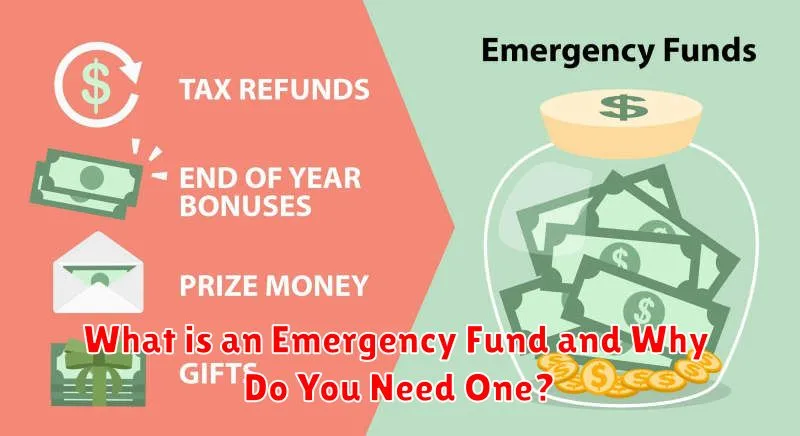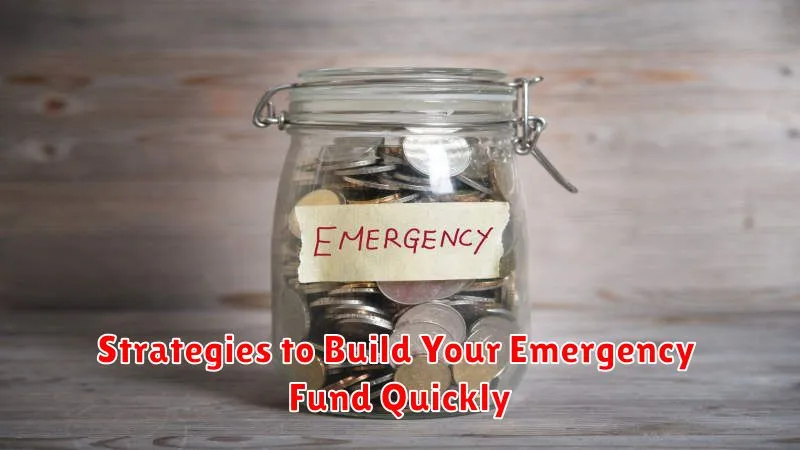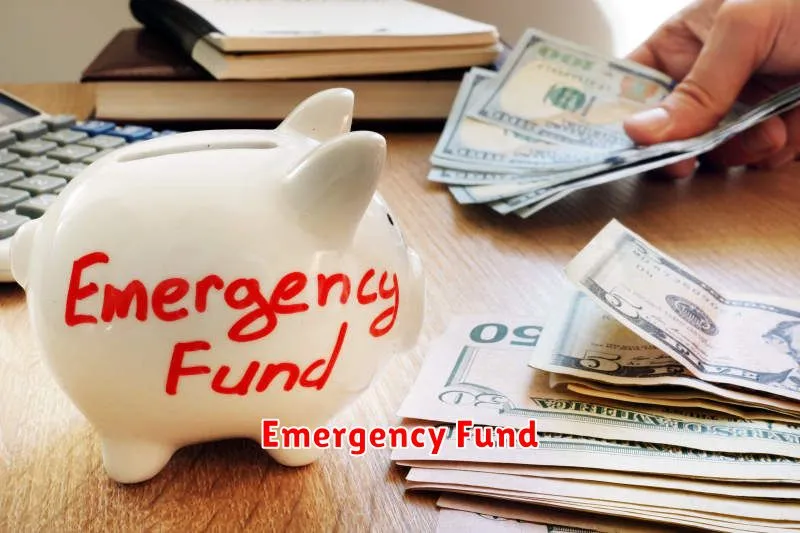Achieving financial stability is a top priority for many, and it hinges on a crucial element: building a solid emergency fund. This safety net of readily available cash can be a lifesaver in times of unexpected hardship, protecting you from the potentially devastating consequences of financial emergencies. Whether it’s a sudden job loss, medical bills, or urgent home repairs, an emergency fund provides the financial security you need to navigate these challenges with less stress.
This comprehensive guide delves into the multifaceted role of emergency funds in achieving and maintaining financial stability. We’ll explore how to determine the ideal size of your emergency fund, the best ways to build it over time, and where to store it for easy access and growth. By the end, you’ll have a clear understanding of how to leverage an emergency fund as a powerful tool for weathering unexpected storms and achieving lasting financial well-being.
What is an Emergency Fund and Why Do You Need One?

An emergency fund is a dedicated savings account designed to cover unexpected expenses and financial hardships. Think of it as a financial safety net that cushions the blow of life’s inevitable curveballs.
But why is having one so important? Life is unpredictable. Unexpected events such as job loss, medical emergencies, car repairs, or home appliance malfunctions can put a serious strain on your finances. Without an emergency fund, you might find yourself relying on credit cards or high-interest loans, potentially leading to a cycle of debt that’s difficult to escape.
An emergency fund provides peace of mind, knowing you have a financial buffer to navigate unexpected situations without derailing your long-term financial goals. It empowers you to face uncertainties with confidence, knowing you have the resources to handle whatever life throws your way.
How to Calculate the Ideal Size of Your Emergency Fund
Determining the ideal size of your emergency fund is a crucial step in achieving financial stability. While a common rule of thumb suggests saving 3-6 months’ worth of living expenses, the specific amount varies depending on individual circumstances.
Start by calculating your essential monthly expenses, including rent/mortgage payments, utilities, groceries, transportation, and debt obligations. Multiply this figure by the desired number of months you aim to cover. For instance, if your essential monthly expenses amount to $2,000 and you want a 6-month cushion, your target emergency fund would be $12,000.
Consider factors that might increase or decrease your ideal emergency fund size. Job security, health conditions, dependents, and income stability play significant roles. Those with volatile incomes or higher financial obligations may benefit from a larger fund, while those with stable incomes and lower expenses might opt for a slightly smaller one.
Remember that building an emergency fund takes time and consistency. Start small if needed and gradually increase your savings over time. The key is to establish a realistic goal and commit to regular contributions. Regularly reassess and adjust your target emergency fund size as your life circumstances evolve.
Where to Keep Your Emergency Fund for Easy Access
When an unexpected financial need arises, you need immediate access to your emergency fund. Therefore, accessibility is key when deciding where to keep your savings.
A high-yield savings account at a reputable bank or credit union is often the best option. These accounts typically offer higher interest rates than traditional checking accounts, allowing your money to grow while remaining readily accessible.
While you could keep a small amount of cash at home for minor emergencies, it’s generally not advisable to keep your entire emergency fund in cash due to security risks and inflation.
Strategies to Build Your Emergency Fund Quickly

Building an emergency fund is crucial for financial stability, but it can seem daunting, especially if you’re starting from scratch. The key is to adopt strategies that accelerate the process without straining your finances. Here are some practical tips to help you build your emergency fund quickly:
1. Set a Clear Savings Goal and Timeline: Determine a target amount for your emergency fund, ideally three to six months’ worth of living expenses. Break down this goal into smaller, manageable milestones to stay motivated. Set a realistic timeline for achieving each milestone, whether it’s weekly, bi-weekly, or monthly.
2. Automate Your Savings: Treat your emergency fund contributions like non-negotiable expenses. Set up automatic transfers from your checking account to your savings account each payday. This “pay yourself first” approach ensures consistent progress without relying solely on willpower.
3. Cut Back on Non-Essential Expenses: Identify areas where you can reduce spending without drastically altering your lifestyle. Consider dining out less frequently, exploring cheaper entertainment options, or temporarily pausing subscription services you don’t use regularly.
4. Increase Your Income Streams: Explore opportunities to boost your income and channel the extra funds directly into your emergency fund. This could involve taking on a side hustle, selling unwanted items, or finding freelance gigs that align with your skills.
5. Windfalls and Bonuses: Direct unexpected income, such as tax refunds, work bonuses, or cash gifts, into your emergency fund. These windfalls can significantly accelerate your progress towards your savings goals.
Remember, building an emergency fund is an ongoing process. Consistency and discipline are key. By implementing these strategies, you can create a financial safety net to weather unexpected storms and face the future with greater confidence.
How to Replenish Your Emergency Fund After Use
Using your emergency fund is a normal part of its purpose, but it’s crucial to replenish it as quickly as possible. Here’s a step-by-step guide on how to do just that:
1. Assess the Damage: Before you begin replenishing, determine how much money you withdrew from your emergency fund. This will give you a clear target to work towards.
2. Review Your Budget: Identify areas where you can potentially cut back on expenses, even temporarily, to free up extra cash for your emergency fund.
3. Prioritize Replenishment: Make replenishing your emergency fund a top financial priority. Allocate a specific portion of your income each month towards rebuilding it.
4. Explore Additional Income Streams: Consider ways to generate extra income, such as a side hustle or selling unwanted items, to accelerate the replenishment process.
5. Be Patient and Consistent: Rebuilding your emergency fund takes time. Stay committed to your repayment plan, and celebrate your progress along the way.
Common Mistakes People Make with Emergency Funds
A solid emergency fund is crucial for navigating unexpected financial challenges. However, many individuals make common mistakes that can undermine their financial security.
One frequent error is not saving enough. Experts recommend setting aside 3-6 months’ worth of living expenses. However, many people fall short, leaving themselves vulnerable in a crisis.
Another mistake is dipping into emergency savings for non-emergencies. Vacations, a new TV, or eating out too often can quickly deplete your safety net, defeating its purpose. Clearly define what constitutes a genuine emergency for you.
Investing emergency funds too aggressively is another pitfall. While it’s tempting to seek high returns, your emergency fund should be easily accessible and not subject to market volatility. Opt for low-risk, liquid options like high-yield savings accounts or money market accounts.
Lastly, forgetting to replenish your fund after use is a mistake. Once you’ve weathered the storm, prioritize rebuilding your emergency savings to its previous level. This ensures you’re prepared for the next unforeseen event.
The Psychological Benefits of Having an Emergency Fund
Beyond the tangible financial security it provides, an emergency fund offers significant psychological benefits.
Primarily, it serves as a buffer against stress and anxiety related to unexpected expenses. Knowing you have a financial cushion to fall back on can bring peace of mind and reduce the emotional strain of navigating difficult situations like job loss, medical emergencies, or unexpected home repairs. This can lead to improved mental well-being and a greater sense of control over your life.
Furthermore, an emergency fund can empower you to make confident decisions about your finances and your future. With a safety net in place, you’re less likely to make rash choices driven by financial fear or pressure. This can lead to healthier financial habits and a more secure future.

